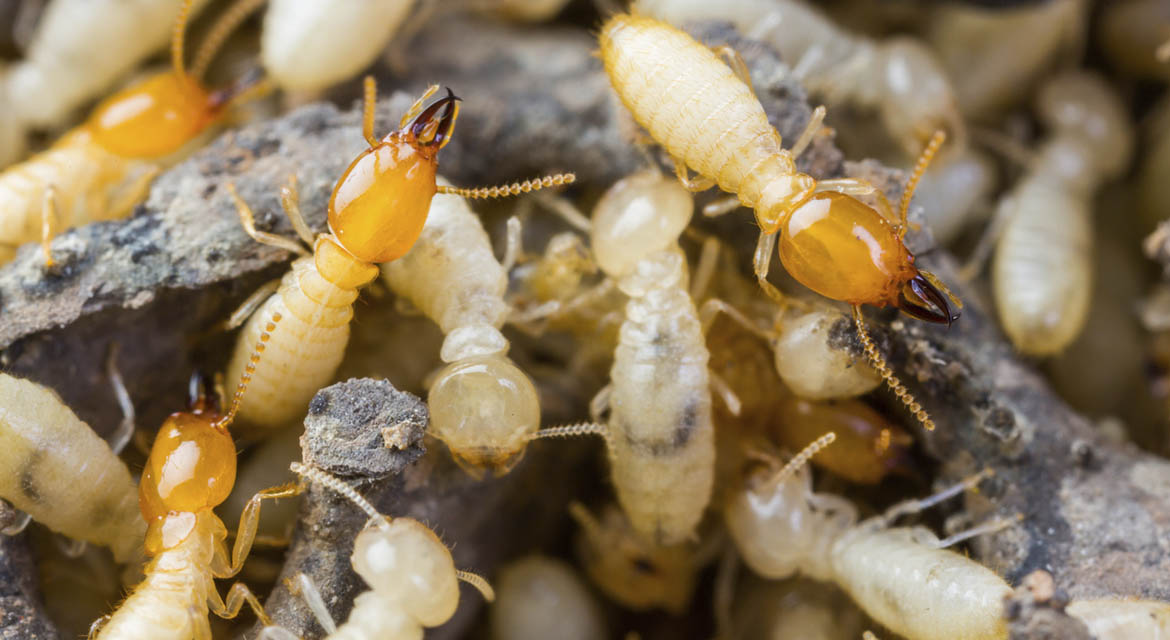Termites Facts & Information
Termite Overview
Termites are highly organized and social insects that belong to the order Isoptera. These tiny creatures, often mistaken for ants, play a significant role in ecosystems as decomposers, breaking down dead and decaying plant material. However, they are more notorious for their ability to feed on cellulose, the main component of wood and plant fibers, causing extensive damage to wooden structures and crops. Termites live in colonies that can range in size from a few hundred to millions of individuals, and they are divided into different castes, including workers, soldiers, and reproductive individuals. Termites are known for their remarkable communication and cooperation within their colonies, relying on pheromones and tactile signals to maintain their complex social structure. Their intricate biology and destructive potential make them a subject of concern for homeowners, farmers, and pest control professionals worldwide.
What do Termites Look Like?
Termites vary in appearance depending on their caste within the colony. Generally, termites are small, soft-bodied insects with a pale, creamy or translucent coloration. Worker termites, which make up the majority of the colony, typically measure about 1/8 to 1/4 inch in length and have a whitish, almost translucent appearance. They lack wings and have a cylindrical body with straight antennae. Soldiers, on the other hand, have a similar body shape to workers but are slightly larger, and they are equipped with enlarged, dark-colored heads and powerful mandibles used for defense. Reproductive termites, often referred to as alates or swarmers, are larger and have wings. They have a dark body with two pairs of equal-sized wings, which are shed after mating. Termite swarmers are often the ones seen during termite swarming events when they leave the nest to establish new colonies. Overall, termite species can vary in appearance, but their soft bodies, pale coloration, and distinct caste characteristics are common features among them.

Not the pest you are looking for?
Check out our pest library to see what other pests we have articles on
Termite Pest Control
Termite pest control is a critical aspect of property maintenance and protection against the destructive capabilities of termites. Various methods and strategies are employed to manage termite infestations, including chemical treatments, baiting systems, and physical barriers like termite-resistant construction materials. Chemical treatments often involve the use of termiticides, which are applied to the soil around a structure or directly into termite galleries to create a protective barrier. Baiting systems, on the other hand, utilize poisoned baits to attract and eliminate termites within their colonies. Regular inspections and preventive measures, such as reducing moisture around the property and addressing wood-to-soil contact, also play a crucial role in termite pest control. Effective termite management typically requires professional assistance to assess the extent of the infestation and determine the most suitable treatment approach to safeguard homes and structures from termite damage.
Termite Resources
Are Termite Treatments Safe for Kids and Pets?
Dealing With Termites In Your Garden Or Yard
Effective Termite Treatment and Prevention Strategies
How Weather Conditions Influence Termite Activity
Termites and Structural Damage
Termites in Homes: Common Species, Entry Points, and Prevention
Termite Treatment Timeline: How Long Does it Take to Get Rid of Termites?
Termites vs. Ants: How to Differentiate and Protect Your Home
The Ultimate Guide to Hiring a Professional Termite Control Service and Understanding Costs
Understanding Termite Damage: Threats to Your Property and How to Prevent Them
Defending Your Home: The Ultimate Guide to Preventing Termite Infestations

